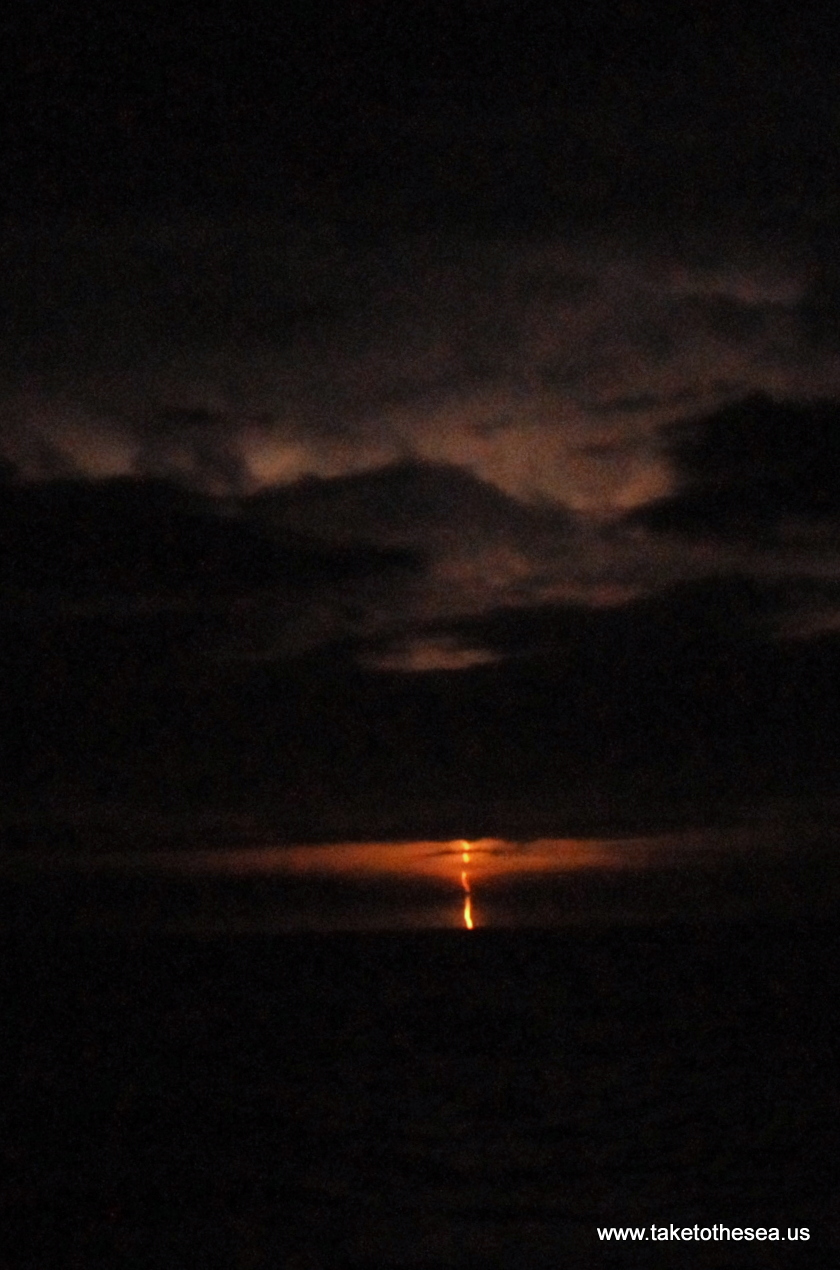
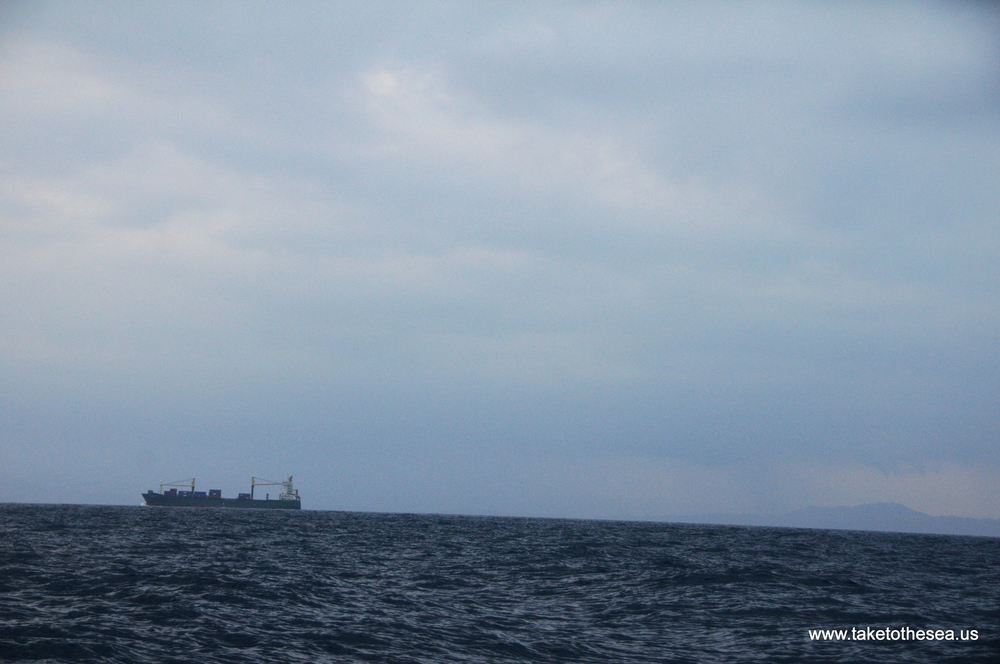
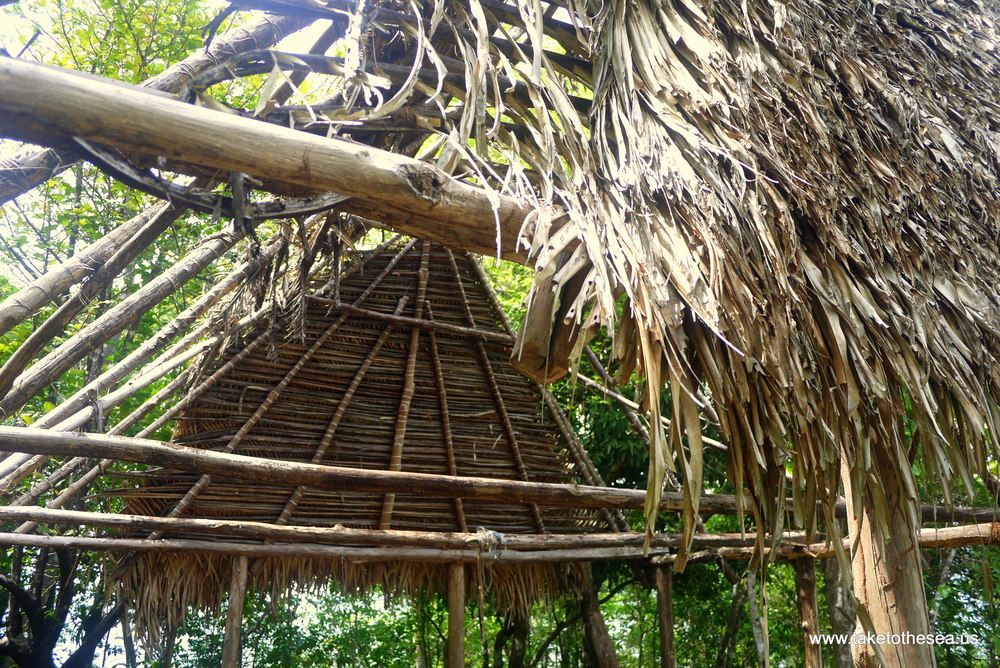
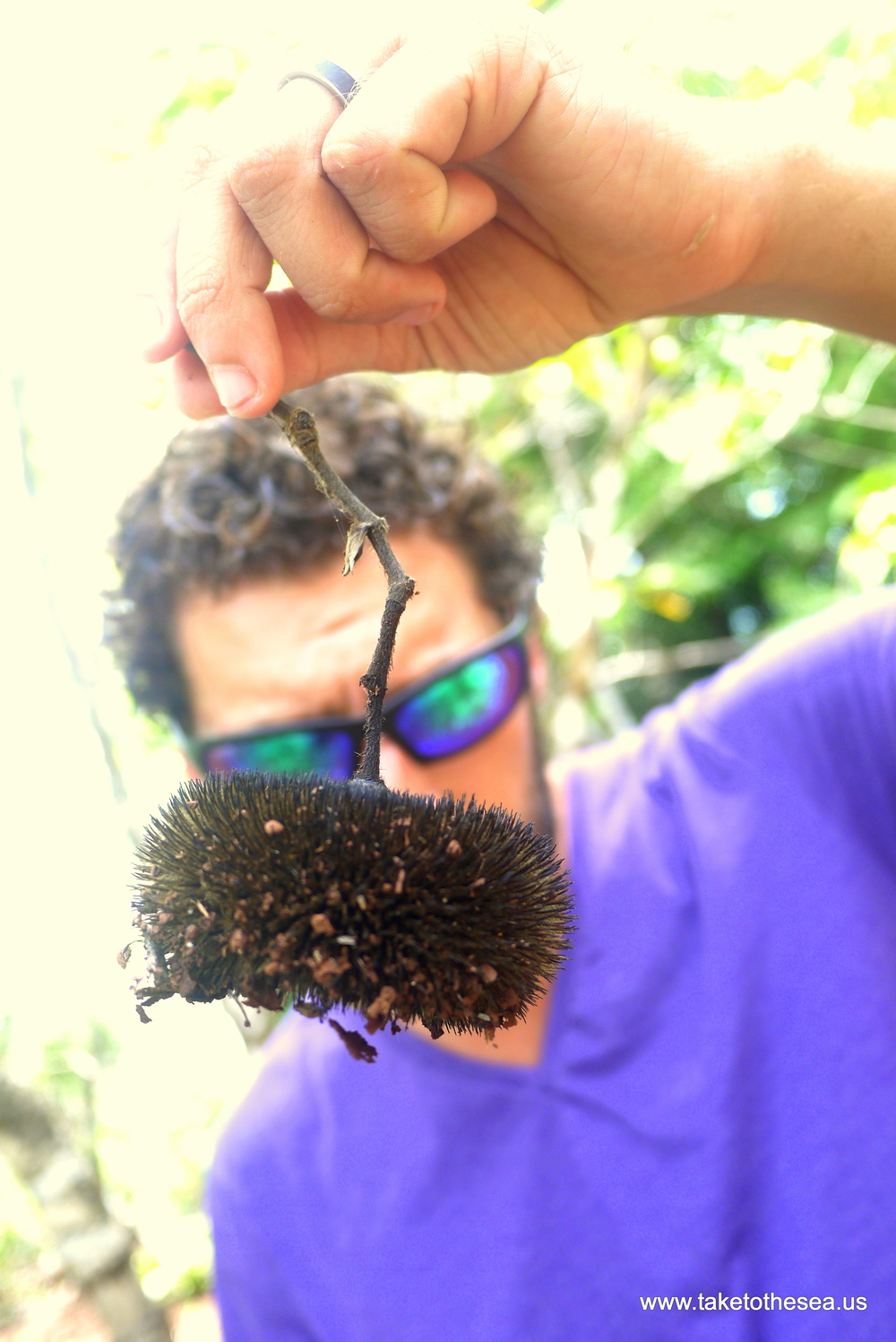
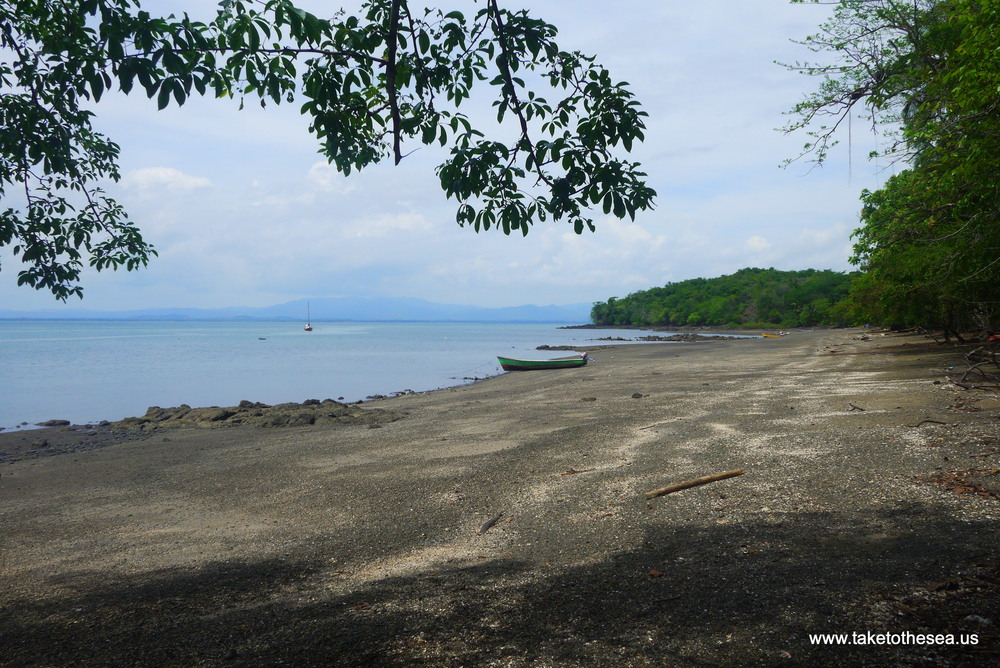
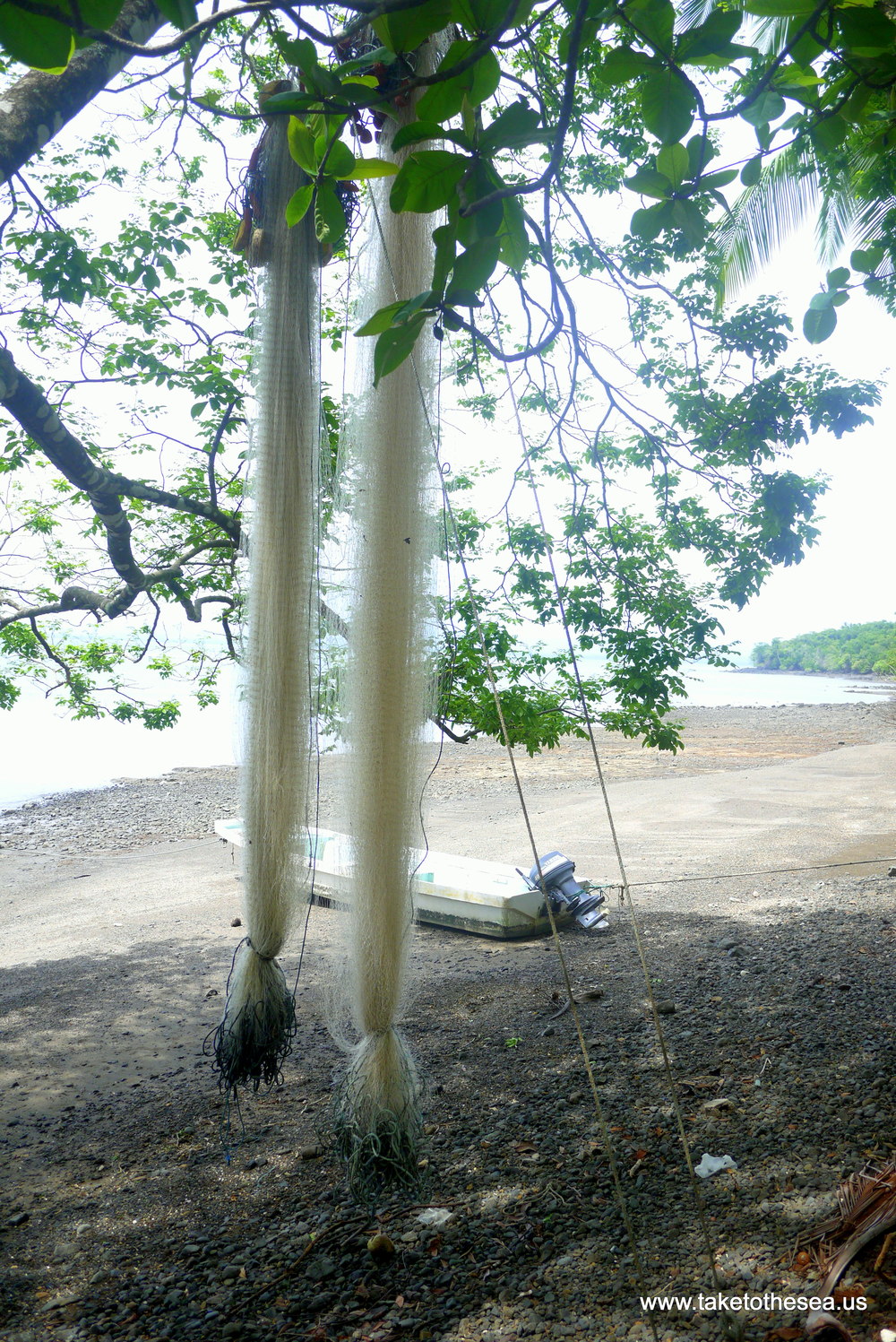
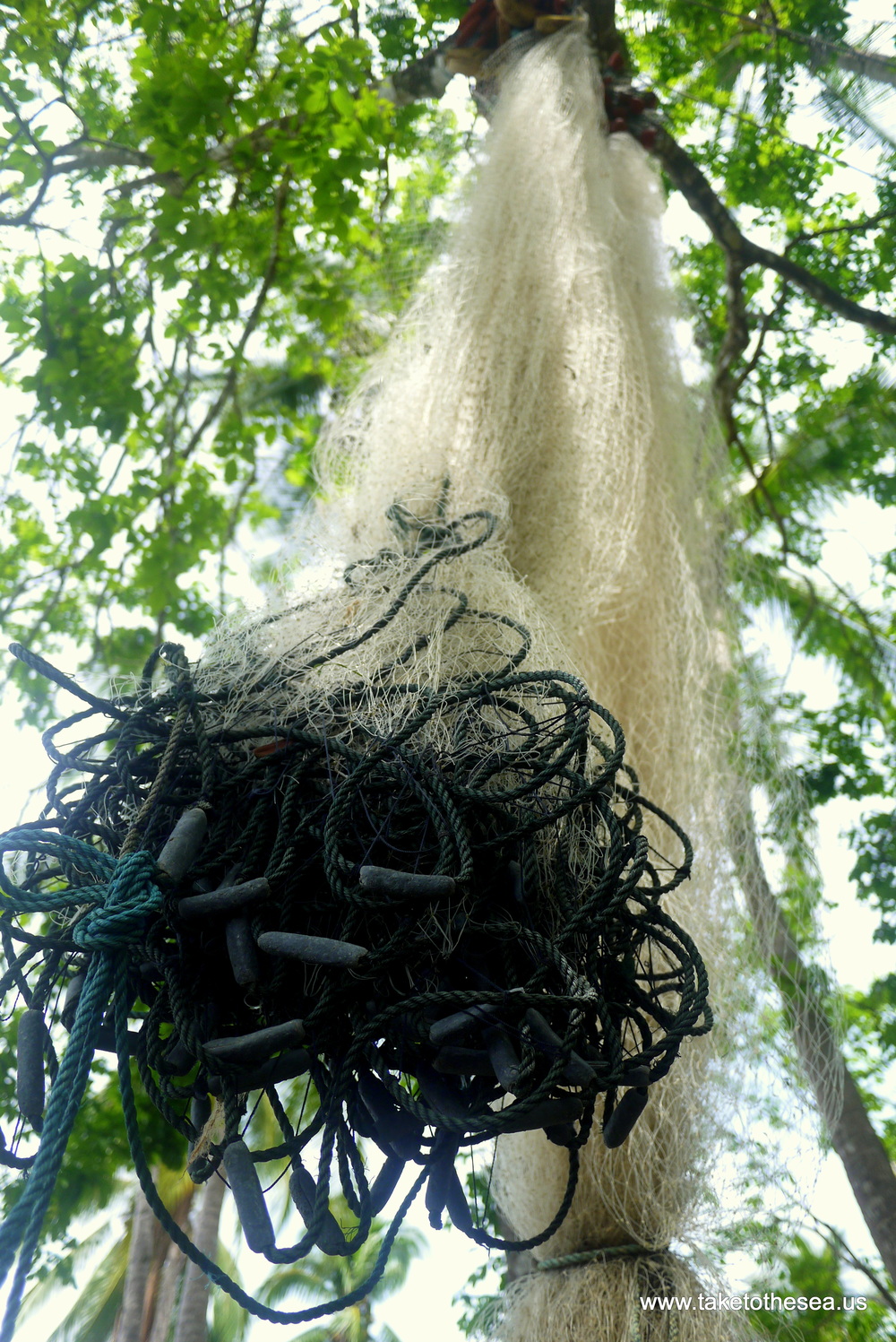
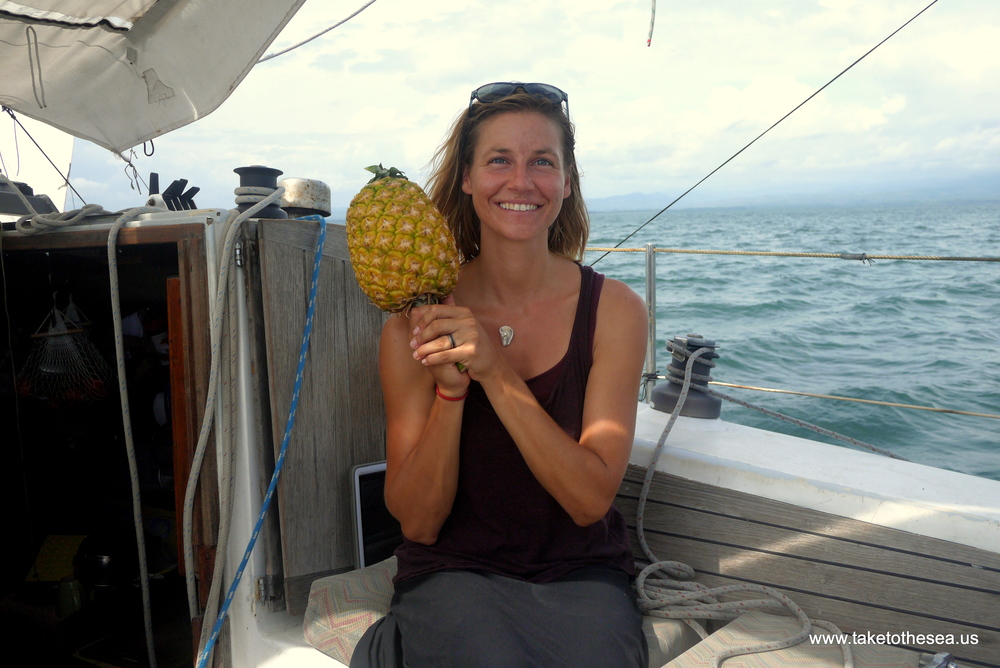
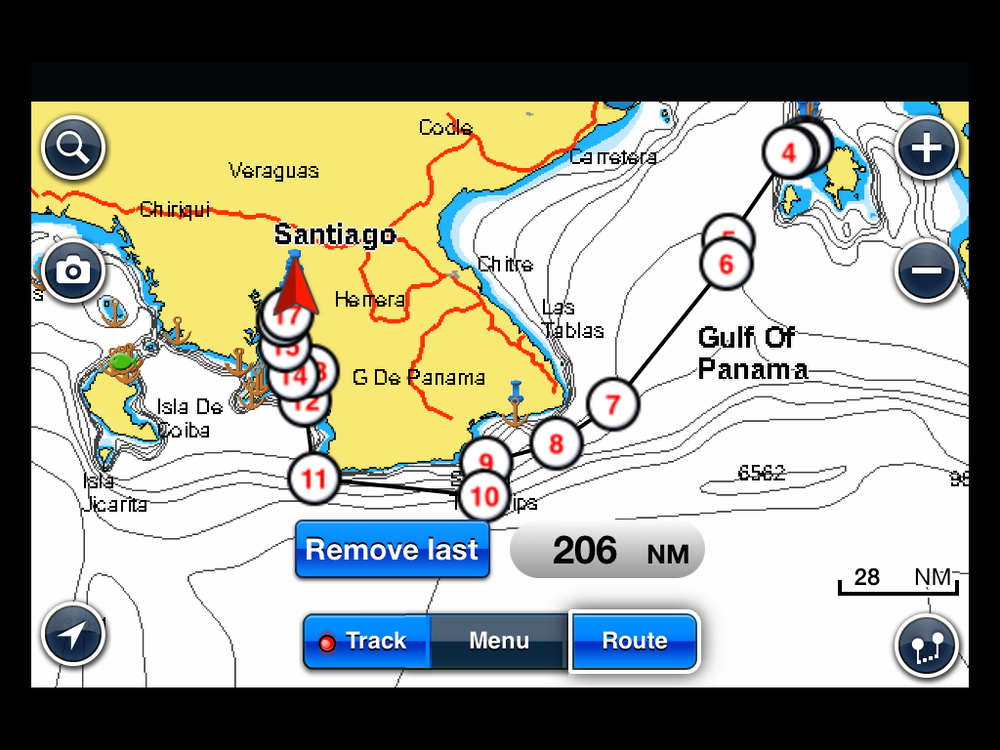
Log book
- Port of departure: Isla Bayoneta (Islas Las Perlas), Panama
- Departure date & time: Sunday, May 4 at 7:30am (0730)
- Port of arrival: Puerto Mutis, Panama
- Arrival date & time: Wednesday, May 7 at 9:30am (0930)
- Total travel time: 3 days and 2 hours (72 hours total, 55 hours in motion)
- Miles traveled: 207 nm
- Average speed: 3.7 knots (WHAT?!? more than a 2 knot average…impossible)
- Engine hours: 1268.0 – 1287.0 – 19 hours
- Fuel: 26.0 gallons – 16.5 gallons – 9.5 gallons used
- Fuel economy: 22 mpg (ooph)
- Tides and currents: On Sunday, high at 7:14am, low at 1:14pm, high at 7:24p. On Monday, low at 1:35am, high at 7:55am, low at 1:55pm, high at 8:15pm. On Tuesday, low at 2:05am, high at 8:35am, low at 2:35pm, high at 8:45pm. On Wednesday, low at 2:45 am, high at 9:05am — 1.5 knot max current.
- Maintenance: Sea strainer cleaned. Batteries topped off.
- Forecast: Light and variable. 5-10 knots (with a patch of 10-15 knots) predicted out of the NW during the earlier part of the day. Once we got around Puna Mala it was predicted to switch to the SW.
Now that’s more like it. The Gulf of Panama was reluctant to swallow us a month ago, but she disgorged us with hectic glee on this passage. We were worried that the N winds had sputtered to a halt and had been permanently replaced by light and variable winds. You can imagine our delight when we woke up to 10-15 knots of wind from the NE. With wind and current at our back, we flew past Isla Pedro Gonzalez, our speed cresting our max hull speed on several occasions. The wind was lively until the early afternoon when the tide switched. The wind mellowed to around 5 knots and we managed to barely move forward (1-2 knots) with the spinnaker.
Towards sunset, the first proper sunset we’ve seen in quite sometime (a good sign), the NE wind started to build again. We doused the spinnaker and resumed sailing under the main and Genoa (we changed sails at the perfect time). After dinner Jeff tried to get some sleep, leaving me at the tiller. The wind had increased to 15 knots, with occasional gusts to 18. The seas were at our back, testing us with the occasional violent set. We had too much sail area up for the Doctor to handle, but I had a need for speed and was happy to be at the tiller, capitalizing on every gust. The Gulf of Panama was eager to evacuate us and I was eager to be evacuated. Every few minutes I would glance down at our speed and get a jolt of energy to see that we were able to sustain 6 knots!?!
Unfortunately, the ride was far from comfortable. If felt like we were being bounced around on the backs of stampeding wildebeests as they navigated particularly rough terrain. Needless to say, Jeff was not getting much sleep. He had spent the previous two hours wondering at the increasingly aggressive motion of the boat and likely questioning my driving skills. When I called him up on deck to get a second opinion on a freighter that was passing in front of us he surveyed the scene and remarked: “Don’t you think you have a little too much sail up?”
“Yeah. But we’re going so fast!”
“It’s not terribly conducive to sleeping.”
“Yeah. But we’re going so fast!”
“What happened to the whole prioritizing comfort over speed thing?”
“Okay. Well. Let’s just drop the main then.” So for the rest of my shift and the duration of Jeff’s shift we flew along under jib alone, still going 4.5 to 5 knots. What we sacrificed in speed we gained in comfort and the Doctor could once again take control.
That whole day and night was a blur, but we made much more progress than we are accustomed to making in a day.
The NE wind mellowed late the next morning and though it allowed us to make some progress, we had slowed considerably from the night prior. We were approaching Punta Guanico when the tide switched. The wind switched with it and it was now on our nose. We tacked out to the S, then tacked back to the W to clear Punta Mariato, but our forward progress had all but halted. Our charts show a big TIDE RIPS in this area and I think we were experiencing the rip. When the seas started to get sloppy and the wind couldn’t make up its mind if it was blowing from the SW or S or W we opted for the motor. On a sidenote: the Azuero Peninsula is HUGE.
We motored through the night, the dark night sky illuminated by stars (STARS! which we haven’t seen in ages…that’s what it felt like anyway) and bolts of lightning that danced around us but never ventured overhead.
On my night watch I decided to watch a movie and selected Black Swan after shopping around on Jeff’s tablet. In the middle of a notably creepy scene (of which there are many) I felt a tap on my shoulder and screamed. “What the hell was that!” I turned on my headlamp and was greeted by this terrifying creature (the red filter on my headlamp did not help):
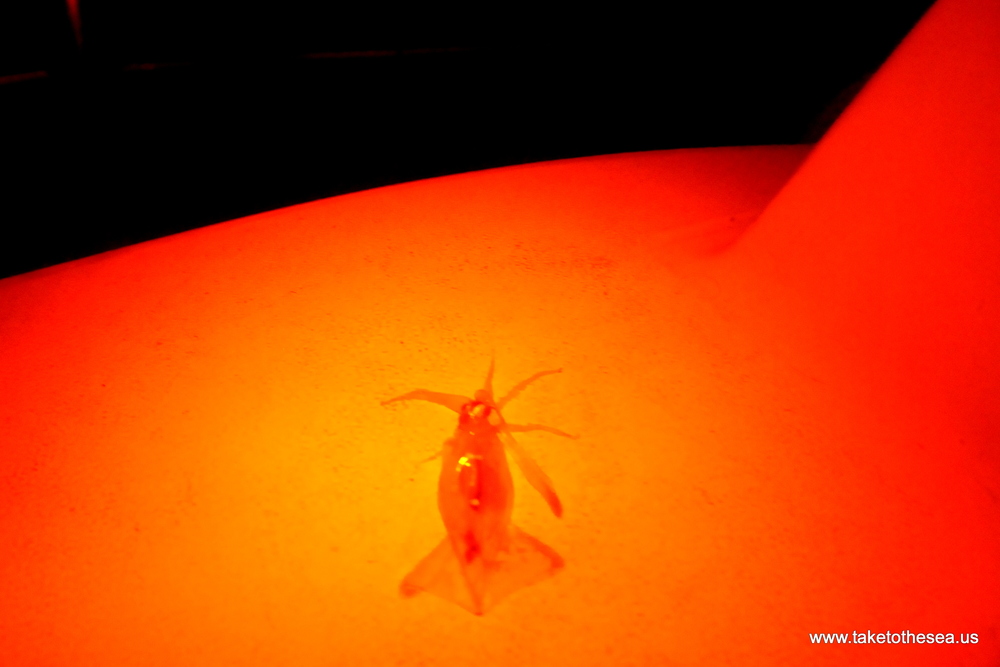
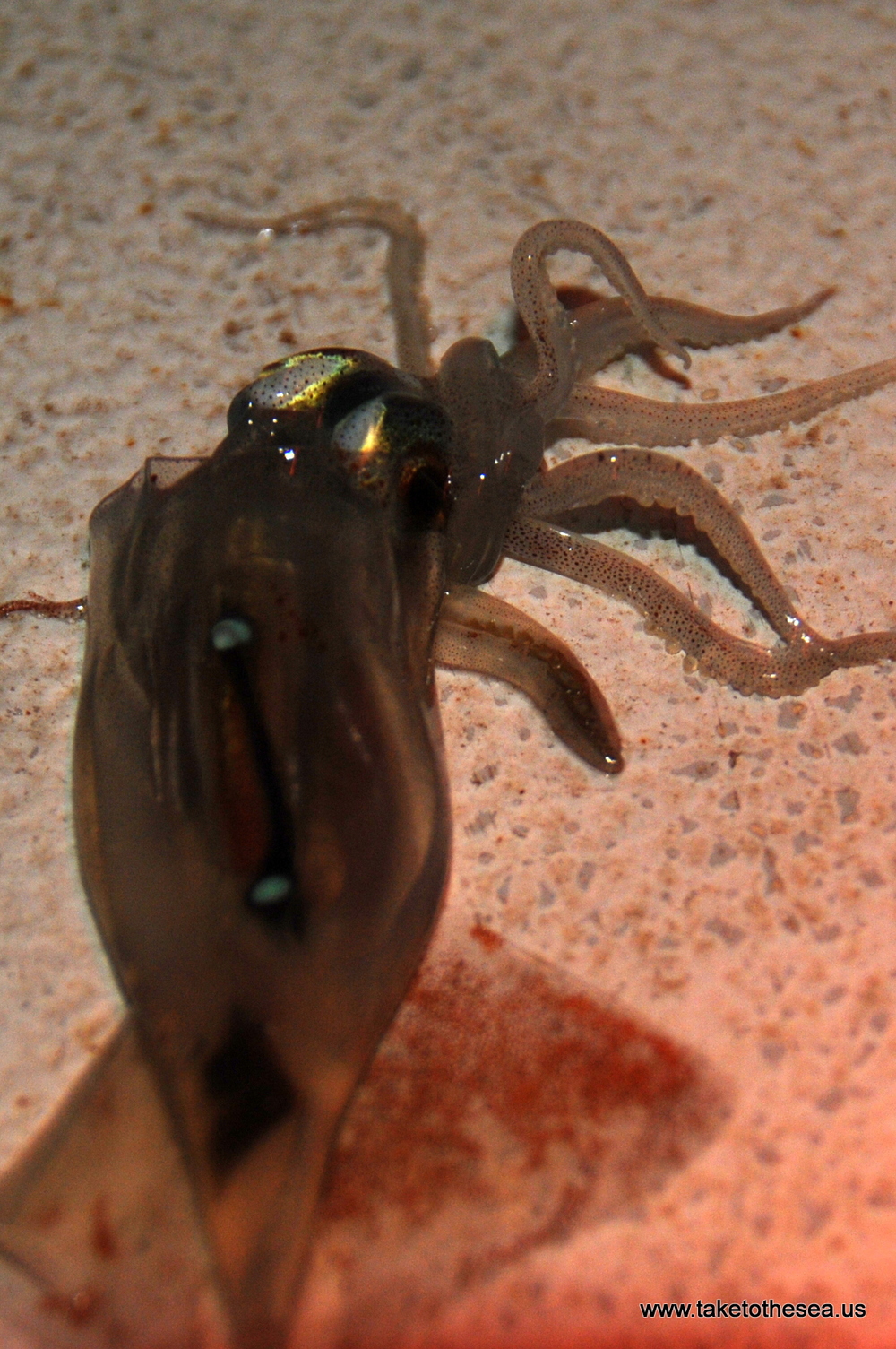
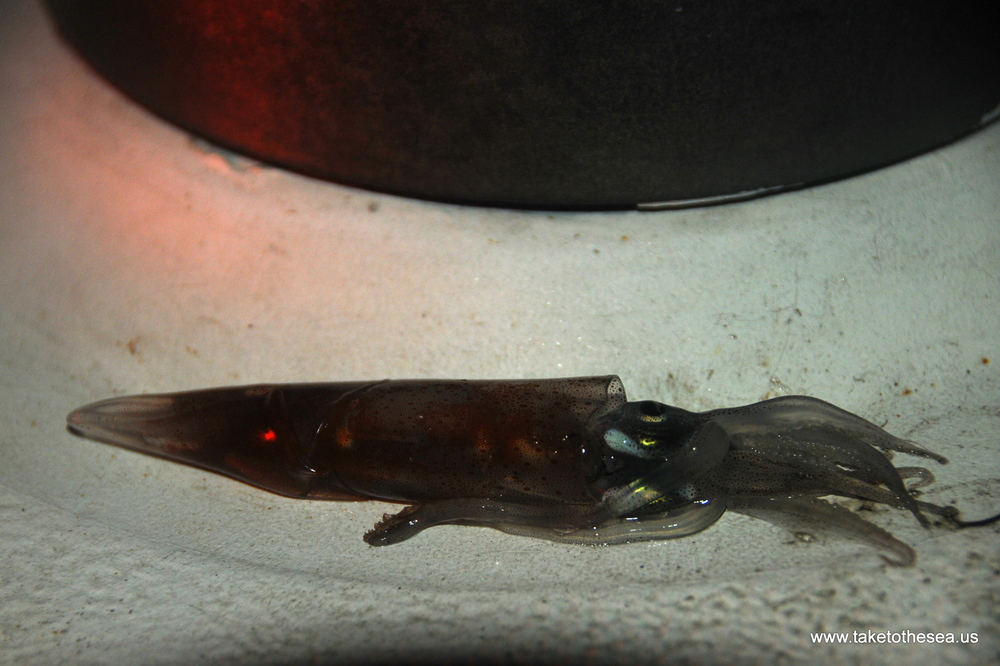
Naturally, I screamed again, which roused Jeff and Tack from slumber. Tack was on my lap, pawing the creature in no time, delighted by the prospect of a new playmate. Jeff called out from the V-berth.
“What’s going on. Are you okay?”
My fear gave way to curiosity and laughter. “It’s an…I don’t know what it is. There’s some creepy looking creature out here. Eeew! Weird. Woah cool. You have to check this out! It’s moving. Agh! It’s moving! I have to take a picture of this. I think it’s a squid! How did he get here!?! Do squid fly? Woah, it’s secreting ink! You’ve gotta check this out!”
After ogling the squid we picked it up with our salad tongs and tossed it overboard, much to Tack’s chagrin.
At sunrise we were still motoring, the seas glassy, calm, unfettered by wind. We motored to the North side of Isla Cebaco where we decided to wait for the tide to switch in our favor. A walk on the island did not yield the cold refrescos (sodas) we were hoping for, but we met some exceedingly friendly folks (sorry, Jeff…couldn’t help myself), collected some as yet unseen shells from the beach and were gifted a pineapple the size of my head from an older couple we met.
The town on North side of Isla Cebaco, at the Platanal anchorage, is really lovely. Colorful, well maintained houses – some made of wood, some of concrete, some of bamboo, some with palm thatched roofs, some with tin – sit along a government constructed walking path (and what government project would be complete without an abrupt interruption in the middle), surrounded by vibrant foliage and talkative birds.
As we rowed back to the boat we were delighted to discover that a SW wind had filled in. The arm on our satisfaction meter was rising. We sailed with the wind at our back, making around 4 knots, as a black cloud closed in on us from the N. We weren’t in any rush, so we set anchor just behind Isla Verde as the wind promptly died and started spilling from the cloud.
Our anchor hadn’t been set for more than 2 minutes when big cherubin drops began falling from the sky. As if celebrating some pagan holiday, we removed our clothes, grabbed our scrub brushes and started cleaning the decks. In Panama they call fresh water aguadulce – sweet water. And was it ever sweet. We couldn’t contain our happiness. The first big rain of the season. We cleaned the boat. We cleaned ourselves. We opened our portholes and our tanks were nearly full after an hour of the deluge. This was particularly welcome since our tanks were nearing empty.
We cut up the pineapple, the juiciest I’ve ever seen, and threw half of it into my handcrank blender to make juice. I managed to find coconut milk and Jeff managed to find the last of our rum. Do you like Pina Coladas? And getting caught in the rain? We certainly do. Serenity swayed to the music we played in the cabin and we sipped Pina Coladas as the lightning flashed and cracked around us.
Our trip concluded the next morning with the rising tide. In Puerto Mutis yet again! I love this place. It’s my happy place.